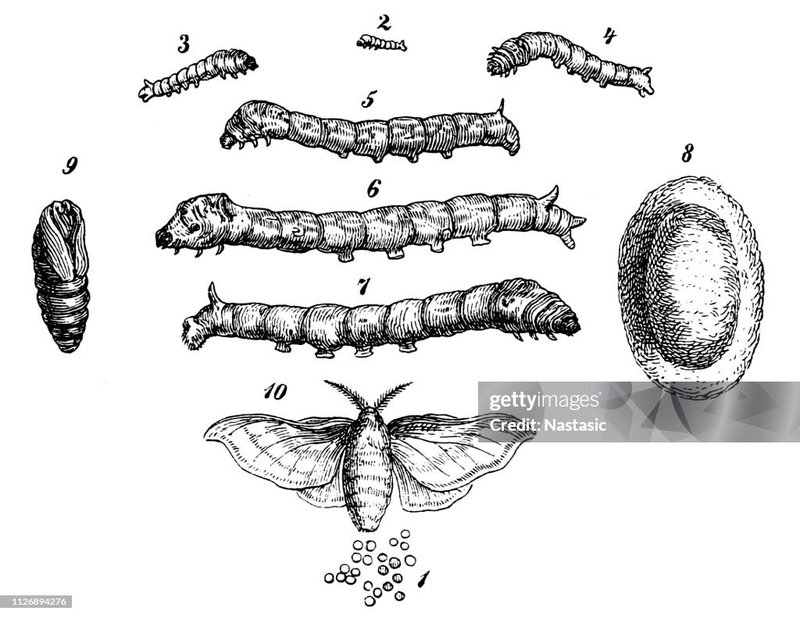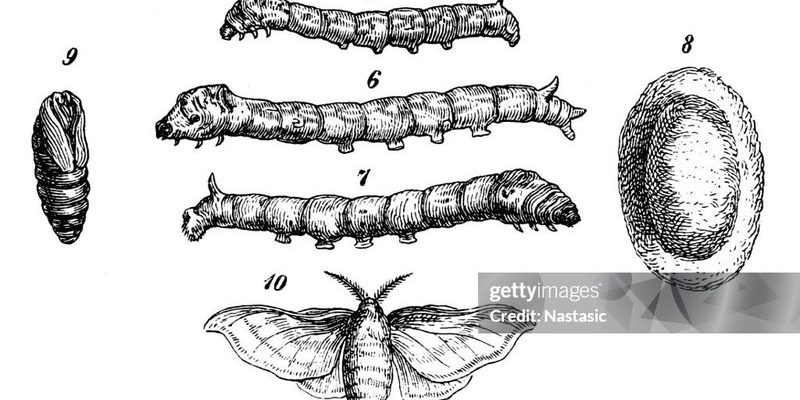
In this article, we’ll dive into the world of silkworm sleep, exploring how they rest, what their sleep cycles look like, and why understanding these patterns matters. Whether you’re an aspiring sericulturist or just a curious soul wanting to know more about these fascinating insects, I’m here to break it all down. Let’s roll up our sleeves and get started!
What Are Silkworms?
Silkworms, or *Bombyx mori*, are the larval stage of the silk moth. These little guys are known for their incredible ability to produce silk, a valuable material used in everything from fashion to luxury bedding. Silkworms have a simple diet, mainly feasting on mulberry leaves. They go through several stages, or instars, before spinning their cocoons and transforming into moths.
But what’s really intriguing is the way they rest and sleep. Unlike humans, who have a clear nighttime sleep routine, silkworms experience a more fragmented pattern. This unique sleep behavior can leave you wondering how they manage to grow and thrive in such a busy little world!
The Sleep Cycle of Silkworms
Silkworms have a sleep cycle that consists of different phases, somewhat similar to humans but with some key differences. Their sleep isn’t continuous; instead, it’s divided into active and rest periods throughout the day and night. Generally, silkworms sleep for about 16–18 hours a day. This can vary based on their age, health, and environmental conditions.
During their active periods, you’ll see them moving around, munching on leaves, or even spinning silk. But when it’s time to rest, they settle down and become nearly motionless. It’s like a switch flips! You might be wondering how they know when to sleep. External factors like light and temperature play a big role in signaling these rest phases.
Why Sleep Matters
You might be thinking, “What’s the big deal about sleep for a silkworm?” Well, here’s the thing: Sleep is crucial for their development. During sleep, silkworms engage in vital processes like growth and cellular repair. It’s their way of regrouping after a busy day of feeding and exploring.
Research has shown that a lack of proper rest can lead to stunted growth and health issues. That’s right—just like how we feel cranky and unfocused without enough sleep, silkworms can suffer too. So, ensuring they have a peaceful environment is essential for their overall well-being.
Rest Phases: Types of Sleep in Silkworms
Now that we’ve established the importance of sleep, let’s dive deeper into the different types of rest phases silkworms experience. Their sleep is generally classified into two main types: short bouts of active sleep and longer periods of rest.
- Active Sleep: During this phase, silkworms may still twitch or move slightly, but they’re largely inactive. It’s a light sleep where they can quickly wake up if disturbed.
- Deep Sleep: This is where they fully relax and are less responsive to stimuli. It’s essential for recovery and growth.
The combination of these phases helps silkworms manage their energy and ensure they can sustain their growth. Imagine it as a well-balanced routine of play and rest—both are necessary for a healthy lifestyle.
Environmental Effects on Sleep
Silkworm sleep is heavily influenced by their environment. Factors like temperature, humidity, and light cycles can affect their daily rhythm. For instance, if the temperature is too hot or too cold, it can disrupt their sleep, leading to stress and unhealthy development.
Keeping a stable, comfortable environment is crucial. For example, if you’re raising silkworms, aim for a temperature around 24°C (75°F) with good air circulation. Also, providing a consistent light-dark cycle mimics natural conditions, allowing their internal clock to function properly.
Think of these conditions like the cozy atmosphere we create in our homes for a good night’s sleep. Just as we wouldn’t sleep well in a noisy or uncomfortable space, silkworms need a peaceful environment to rest effectively.
Common Issues with Silkworm Sleep
Just like any living creature, silkworms can face sleep-related issues. One common problem is sleep disturbances caused by environmental stressors or health issues. If they’re not getting enough quality rest, it can have a ripple effect on their growth and silk production.
Signs of sleep disturbances include unusual activity during expected rest periods or a lack of growth. If you notice your silkworms behaving differently, it might be time to assess their environment. Are they too crowded? Is the temperature fluctuating too much? Addressing these factors can help get them back on track.
It’s important to keep an eye on your silkworms and ensure they’re getting the rest they need. Think of it like monitoring a friend who looks tired—sometimes a little attention goes a long way!
How to Promote Healthy Sleep for Silkworms
If you’re keen on raising happy, healthy silkworms, understanding and promoting their sleep patterns is key. Here are some tips to create the perfect restful environment:
- Maintain Optimal Conditions: Keep the temperature and humidity stable. Aim for around 70-80% humidity for best results.
- Reduce Noise and Vibrations: Silkworms are sensitive creatures. A quiet space allows them to rest without interruptions.
- Provide Proper Nutrition: Feeding them a balanced diet of fresh mulberry leaves helps them stay healthy and encourages better sleep.
By focusing on these areas, you can help ensure your silkworms get the quality rest they need. Just like a solid routine makes for a productive day, a restful environment supports their growth and silk production.
Understanding silkworm sleep and rest phases is a fascinating journey into the world of these tiny silk-makers. From their unique sleep cycles to the environmental impacts on their rest, there’s so much to learn about these remarkable creatures. By nurturing their sleep, you’re not just supporting their health; you’re also nurturing the future of silk production.
So whether you’re just curious or you’re diving into sericulture, remember: a little attention to their rest can make a big difference. Here’s to happy, well-rested silkworms—ready to spin their magic!

